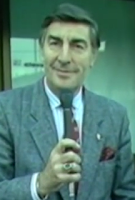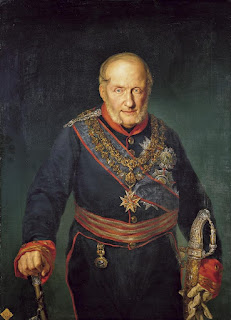Enjoyed prominence as part of Transavanguardia movement
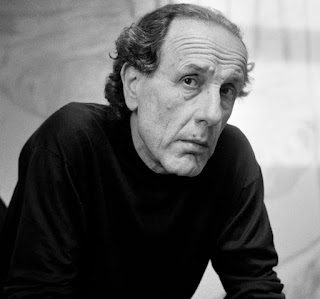 |
| Enzo Cucchi devoted himself to poetry before directing his talents towards painting and other art forms |
The Transavanguardia, which peaked during the 1980s, was part of an international revival of expressionist painting. Other Italians who could be considered part of the movement included Sandro Chia, Francesco Clemente, Nicolo de Maria and Mimmo Paladino.
Cucchi’s most important works include the frescoes of the Chapel of Monte Tamaro near Lugano, designed by the architect Mario Botta, which he painted between 1992 and 1994, and the design of the curtain for the theater La Fenice of Senigallia (1996), not far from Morro d’Alba.
In his early years, although his self-taught skills as a painter attracted praise, Cucchi was more interested in writing poetry. Some of his writing was published by La Nuova Foglio di Macerata, a small publishing house, through whom he met art critic Achille Bonito Oliva, who became an important figure in his career. It was Oliva who came up with the term transavanguardia, which literally means “beyond the avant-garde”, to describe the new generation of artists that followed the avant-garde art of the 1960s.
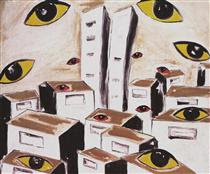 |
| Cucchi's 1996 painting, Paese amato, an example of the neo-expressionism of the Transavanguardia movement |
Oliva referred to the Transavanguardia for the first time in Flash Art Magazine in 1979. By the Venice Biennial of 1980 it had entered the lexicon.
Painters and artists considered to be of the movement were not bound by particular rules or language of expression, but they shared a common preference for figurative art, the representation of real things.
Considered the most visionary of Transavanguardia artists, Cucchi became internationally famous during the ‘80s, when he realised permanent works in four different cities - the Tel Aviv-Jaffa Mosaic for the Museum of Art in Tel Aviv, the monumental ceramic Solco for the Ala Mazzoniana in the Termini Railway Station in Rome, two works in ceramic for the Salvator Rosa Station in the Naples subway, and a mosaic for the courtroom of the new Palace of Justice in Pescara.
Cucchi has made outdoor sculptures for the Brueglinger Park in Basel and the Louisiana Museum of Modern Art in Humblebaek, Denmark. He created a fountain for the garden of the Museo d’arte contemporanea Luigi Pecci in Prato, the Fontana d‘Italia at York University in Toronto, and a fountain in the main square, Piazza Tarsetti, in Morro d'Alba.
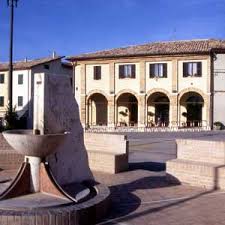 |
| Cucchi's fountain in his home town of Morro d'Alba in Ancona province |
Cucchi's first major Retrospective was held at the Guggenheim Museum in New York in 1986. His works are held in numerous museum collections including the Museum of Modern Art in New York, the Tate in London and the Art Institute of Chicago. He lives and works in Rome and Ancona.
| The Piazza Tarsetti, main square of Morro d'Alba, where Cucchi grew up before moving to Rome |
The small town of Morro d'Alba, which has a population of about 1,850, has an elevated position offering attractive views and retains a medieval feel, its ancient walls still intact, and within it a network of narrow lanes, piazzas and pretty buildings. Including the Palazzo del Municipio and the Loggia dei Mercanti, which once housed the local market. The town is famous for its red wine - Lacrima di Morro d'Alba - which is produced with a very small territory, and for "vino visciola," an after-dinner drink that infuses the red wine with sour cherries and their syrup.
 |
| The 18m high Roman arch of Trajan still stands guard over the harbour at Ancona, which Trajan built during his reign |
The coastal city of Ancona, where Cucchi has a home and a studio, is a bustling port with a population of almost 102,000. Although the area around the port has an industrial feel, there are some notable beaches nearby and a good deal of history in the older part of the city, bearing witness to its Greek and Roman past. The 18m-high Arch of Trajan, built in honour of the emperor who built the city’s harbour, is regarded as one of the finest Roman monuments in the Marche region. Ancona’s harbour contains the Lazzaretto, a pentagonal building constructed on an artificial island in the 18th century as a quarantine station designed to protect the city from diseases carried by infected travellers.
Also on this day:
1812: The birth of the Blessed Maria Cristina of Savoy
1812: The birth of poet and patriot Aleardo Aleardi
1893: The birth of writer Carlo Emilio Gadda
1893: The death of opera star Giuseppina Strepponi
Home










